2025 Honda CB650R / CBR650 Review and the Amazing E-Clutch
Game Changer or Gimmick?
Until recently, the motorcycle transmission has remained, effectively the same. For sure there were a few outliers along the way, like the Hondamatic.
The traditional, sequential, constant mesh, manual motorcycle transmission has been around forever probably because they are proven and simple. Squeezing the clutch, pulls on a cable, which pulls this little arm, which rotates a rod inside the motor, which separates the clutch plates, separating the engine from the transmission.
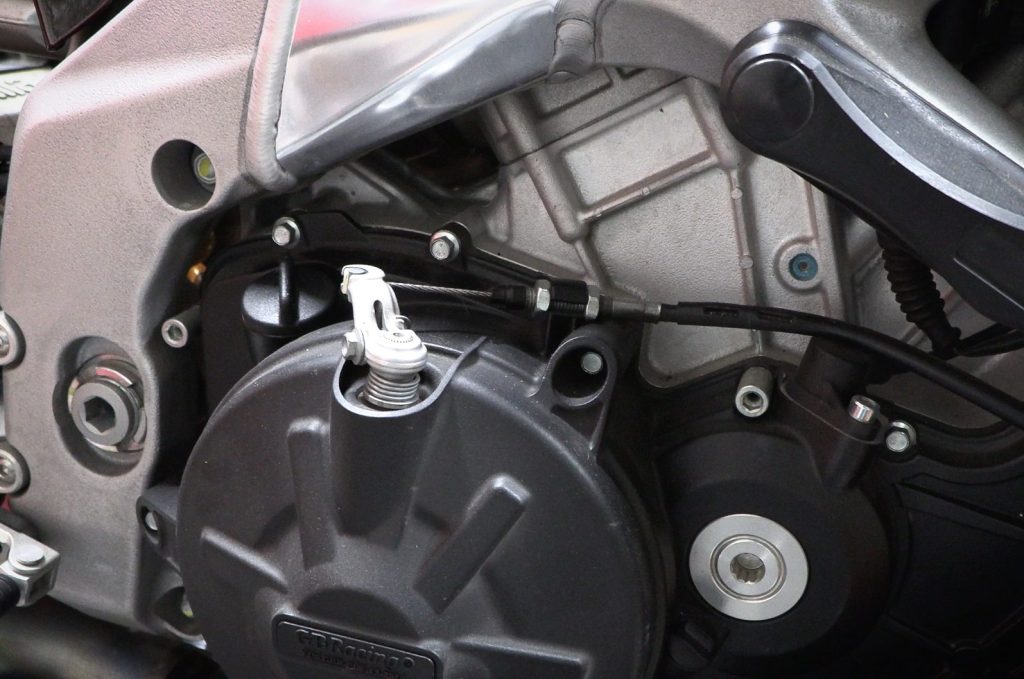
So how we change gears on motorcycles hasn’t really changed either. There’s the way most of us were taught by our dad, or at our beginner rider course.
Roll off the throttle. Squeeze the Clutch. Move the shift lever. Release the Clutch. Roll back on the throttle.
I mean, that works. It’s a bit clunky. But it’ll get you there. If you want to do better, most of us work on doing something a bit more efficient. Conservation of motion as the musicians say.
We preload the shifter by putting a little bit of pressure on the lever. Using only two fingers on the clutch, we do a quick blip on the throttle while squeezing halfway on the clutch while moving the lever to the next gear. It’s all about that blip.
Remember how I said motorcycles are constant mesh? That means inside the little gears are always turning other little gears. What the blip does for us is relieve some pressure so one gear can move over to engage with another.
Try the preload method without the blip or get your timing wrong and you’ll be greeted with a bang that will make even the least mechanical sympathetic riders feel bad.
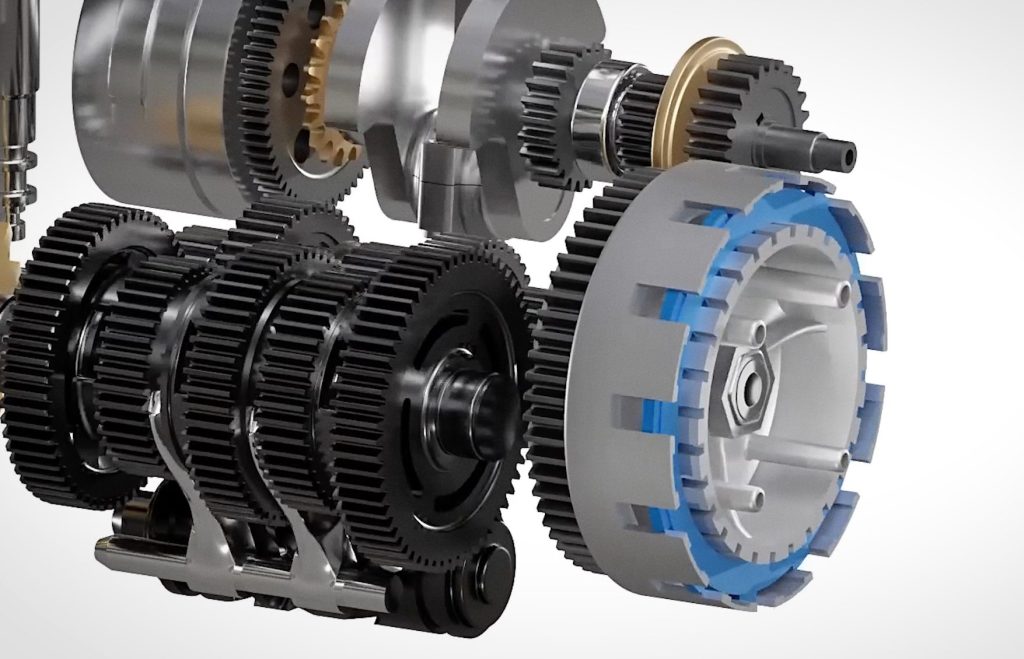
But then came the quick shifter. This is a racing technology that emulates the blip shift.
On the shift rod, there’s this device and it can sense the pressure on the lever and it will tell the computer to cut spark or fuel just long enough to take pressure off the gears inside the transmission so it will slip into the next gear. We’re talking, like 60 milliseconds.
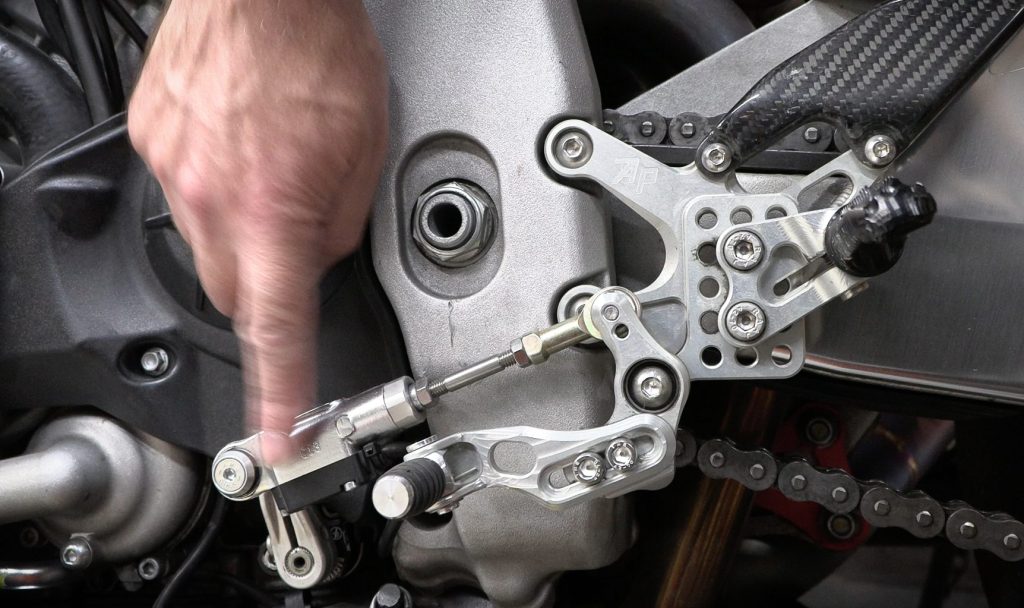
The problem with quickshifters is that it’s a race technology. They work best at high revs and high loads. Even the best systems can be horrible and clunky when you try to use them while trundling around town. Despite that, we’re seeing quickshifters on touring bikes and when you hit the reddit or the facepage, you’ll read lots of complaints about how the quickshifter is terrible around town or at slower speeds. Of course it’s terrible, that’s not how quickshifters are designed to work. Which makes the use case for quickshifters fairly limited.
Now, a few years ago, Honda came out with the DCT Dual Clutch Transmission. It is a fully automatic transmission. No clutch lever, just let it shift on it’s own or push a button to change gears.
I’ll tell you true. And this is my bias, but I don’t much care for automatic transmissions. Every vehicle I own has a clutch. I love the driving riding experience, and for me, a bit part of that is changing gears.
But then I got a call from American Honda and they said “Hey, we would like you come out to Atlanta and test our new E-Clutch system on the brand new CB650 and CB650R.” I mean, who says no to Honda? Of course I would!
But before we get ahead of ourselves, what exactly is the E-Clutch? I’ll start off and tell you what it’s not. It is not an automatic transmission, it’s not a manumatic, and it’s not really a quickshifter. It’s a little bit of everything.
How it works is really elegant, actually. For all intense and purposes it’s the exact same motorcycle and transmission, except for this thing hanging on top of the engine case on the clutch side.
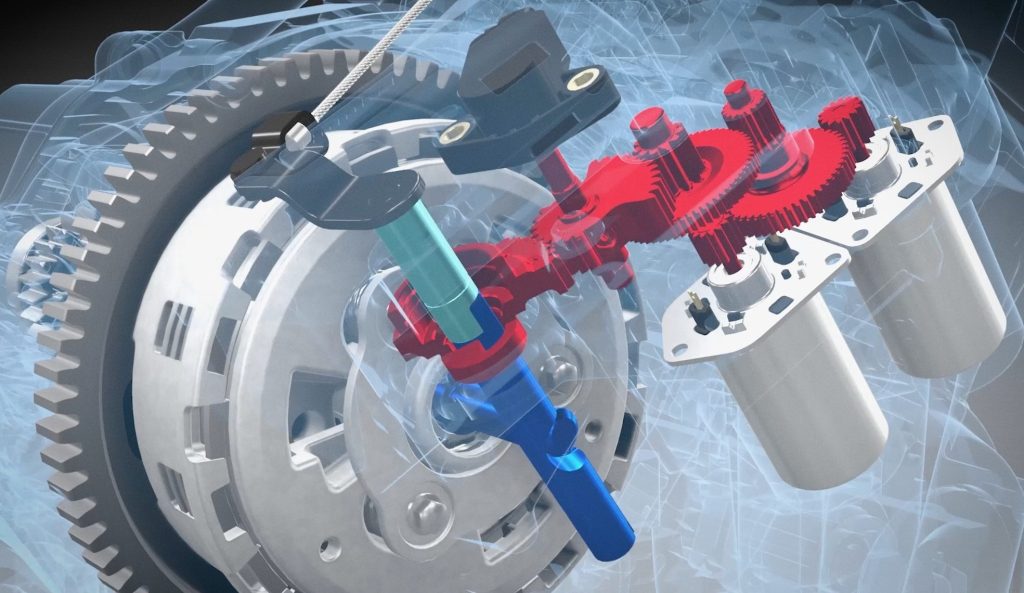
You know how on every other motorcycle when you squeeze the clutch lever it basically rotates that rod that opens up the clutch. The E-clutch breaks that rod into two. If I squeeze the clutch it works just like normal. But if I don’t, these little electric motors intervene and rotates that rod for me. It uses data from the throttle, pressure on the shift lever and I’m going to guess AI Blackmagic to do its thing.
I didn’t want to come to any real conclusions while in Atlanta. I flew home thought about the bike for the weekend and I think I came to some conclusions about this bike.
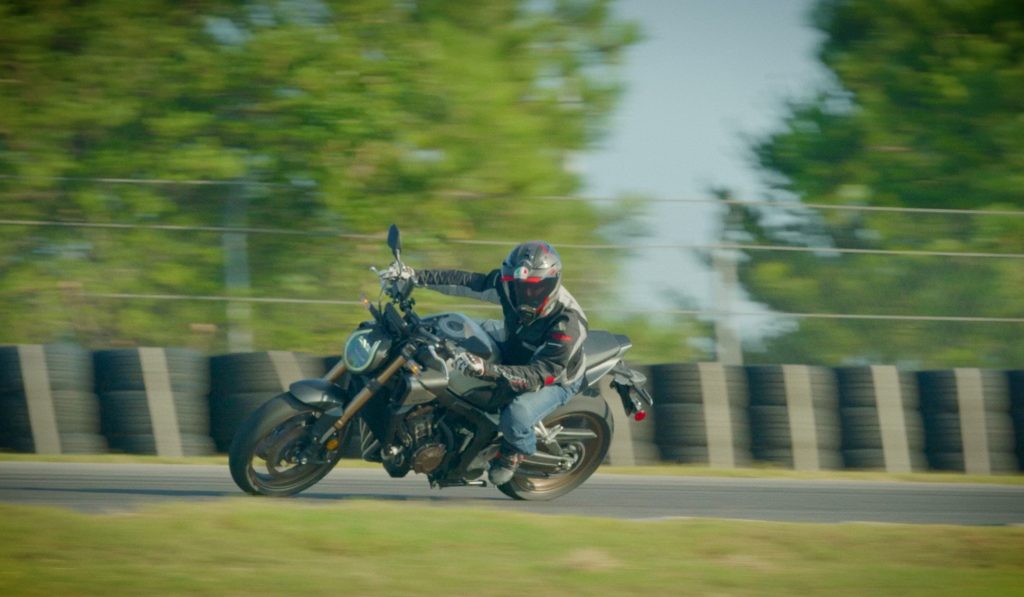
The first is; When in Atlanta I kept thinking about the new rider and reducing the barrier to entry, and that is a huge thing. A big reason why I make these videos is I want to help the sport grow. If anxiety over learning the clutch is keeping you from learning to ride. Here’s a solution. The E-clutch comes standard on these two bikes, and costs the same as last years model. It’s costs nothing extra.
But I’m a Veteran and I started thinking about all my brothers and sisters at arms who came home maybe a little less able bodied than when they left. If a struggle with operating the clutch is keeping any of them from riding… Well, here you go. It’s still a proper, full-tilt fun motorcycle – only Honda is just reaching over your shoulder to take care of that clutch lever for you. That line might be a bit much…
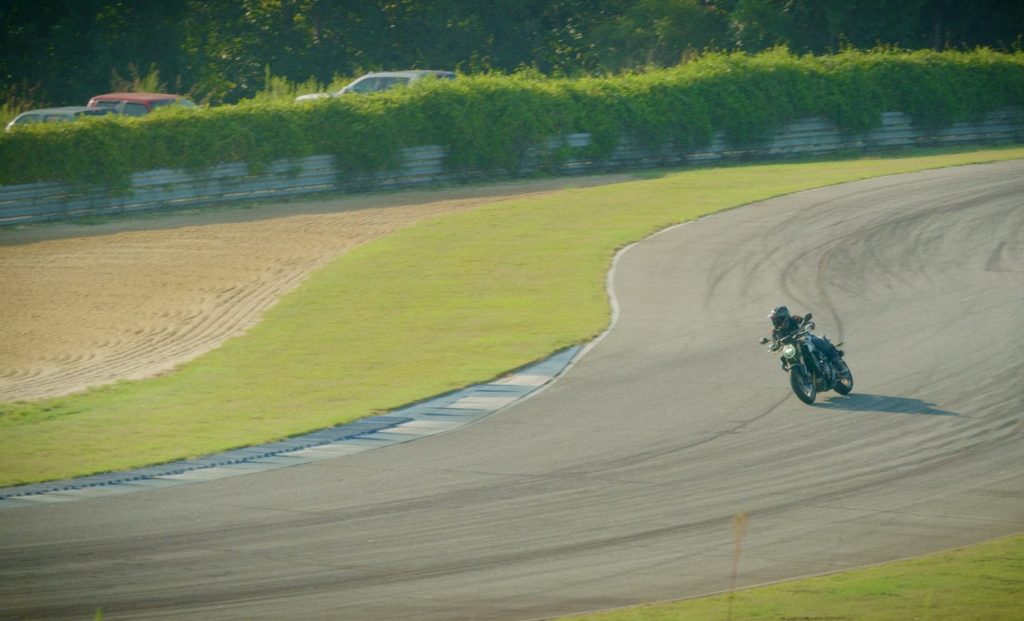
My second thought is; would I put an e-clutch on my motorcycle? The answer is yes. If this was a kit that could be added to any bike, I would put this on every bike I own. From a performance standpoint, it’s the best quickshifter I’ve ever used – except it’s more flexible and works in more situations. Open throttle downshifts. So good! The intuitive nature of it means if I want to use the clutch I just use the clutch. And if I don’t, I don’t. Sure you can turn if off if you want to, but I never would. You literally do not have to fiddle with any menu settings to take full advantage of the technology. It’s absolutely transparent.
Now, I know that down in the comments there will be folks saying this is dumbing down the sport or whatever else, and I figure Honda wants me to review the E-Clutch as it works on these two CB’s.
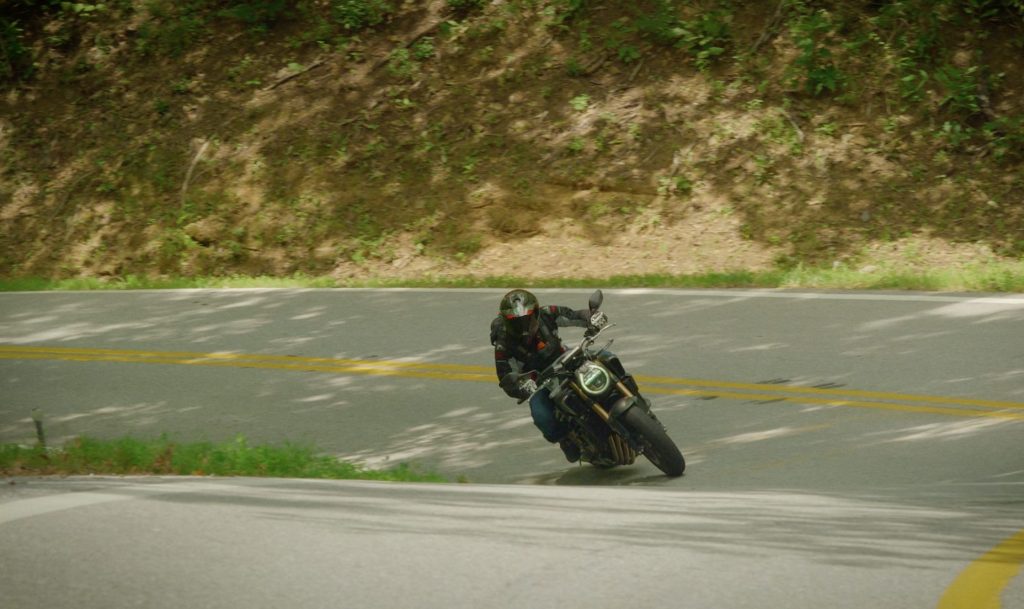
But I can’t shake the thought that Honda may have just changed the industry. I really think that as soon as you ride an E-clutch, you’ll want one on your bike too. It takes nothing away from the traditional riding experience, and in exchange for less than five pounds of extra weight and two little electric motors, it ultimately makes the riding experience better. Well done, Honda.
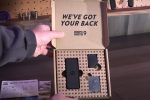
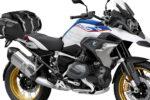


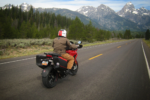
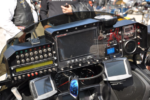

I just don’t see the need for it to be the only way provided. More parts to fail and more weight to haul around.
Give me the option, I might sign on. Otherwise, I’ll stick with my `76.
As you refer to in the article I have problems using the clutch lever but at 67 didn’t want to give up touring. So I bought a Honda NT1100 DCT, 13000 miles later I’m still loving it. Anyone who thinks motorcycles are less fun because they don’t have a clutch has a very shallow viewpoint. This E-clutch will give me access to a greater variety of bikes before death or disease robs me of the pleasure of riding a motorcycle.